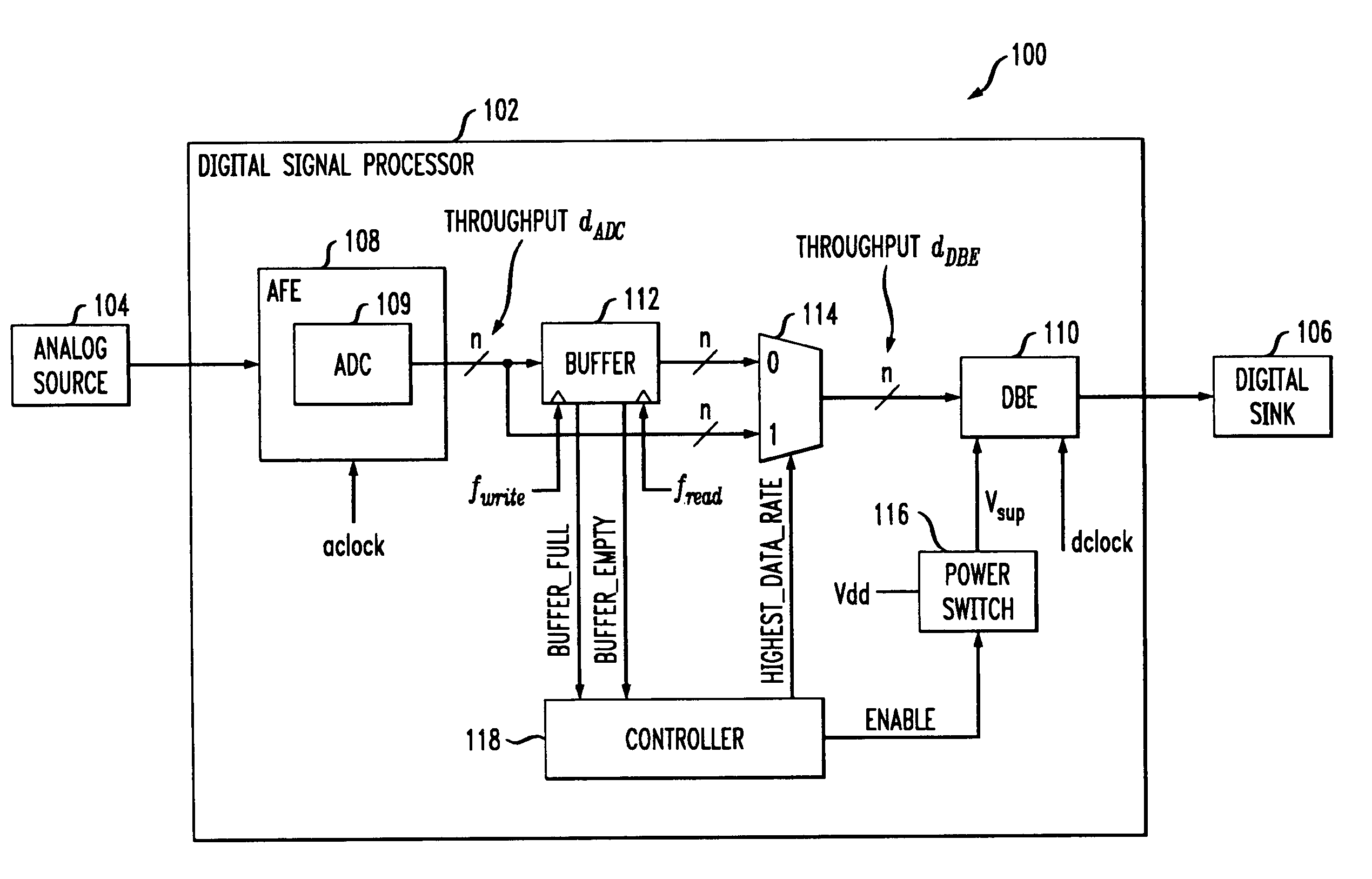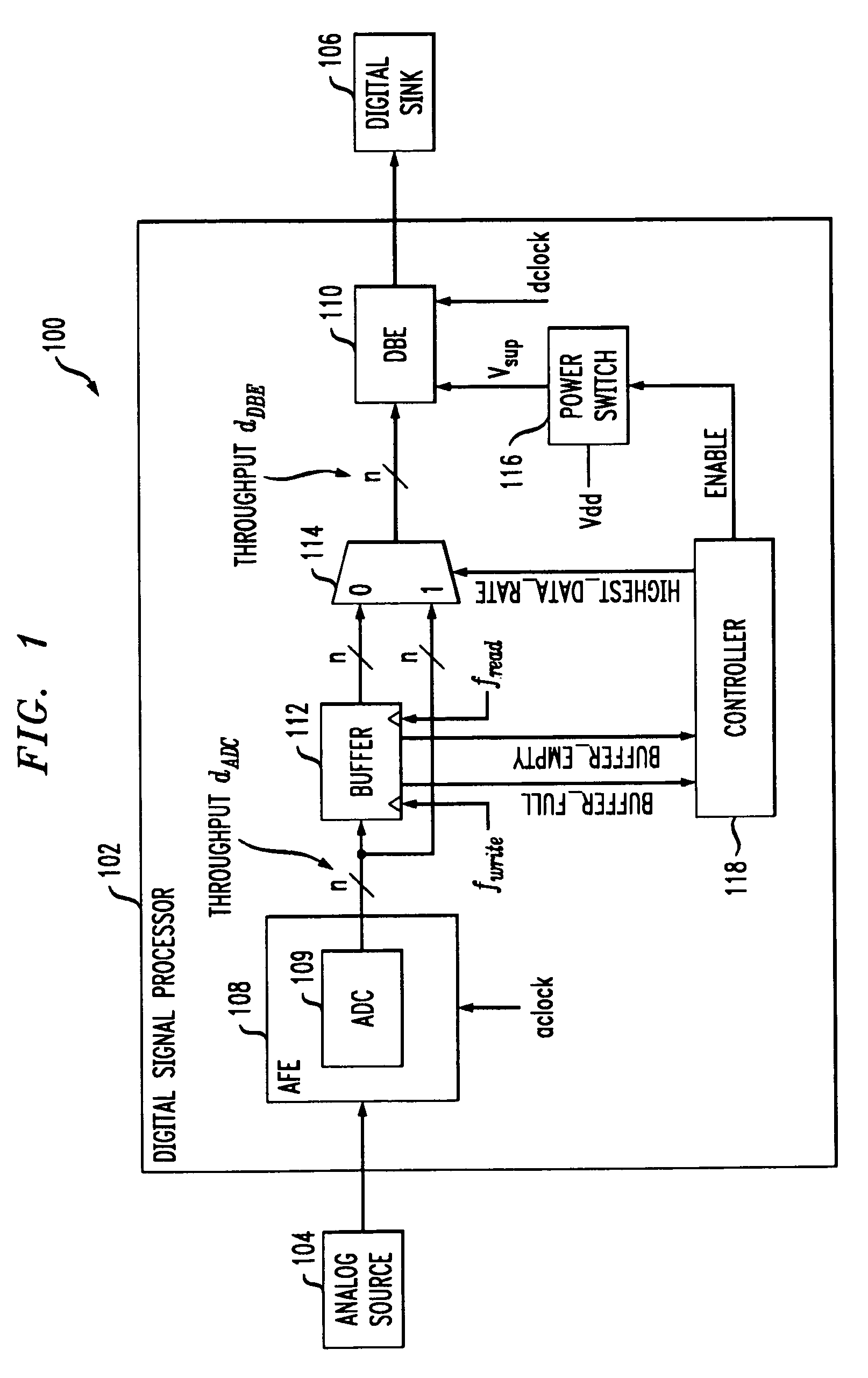Turning off buffer when a digital back end operates at a same data rate as the analog front end
a digital back end and data rate technology, applied in the field of signal processors, can solve the problems of reducing the amount by which the supply voltage can be reduced, the primary source of power consumption of the circuit, and the use of expensive voltage regulators, so as to reduce the leakage power of the processor without significantly affecting performance and/or area, and save power
- Summary
- Abstract
- Description
- Claims
- Application Information
AI Technical Summary
Benefits of technology
Problems solved by technology
Method used
Image
Examples
Embodiment Construction
[0012]The present invention will be described herein in the context of an exemplary processor circuit, such as a DSP circuit, and an illustrative buffer circuit for use therein. It is to be understood, however, that the techniques of the present invention are not limited to the circuits shown and described herein. Rather, embodiments of the invention are directed to techniques for reducing power consumption in a processor circuit, without significantly impacting performance and / or area of the circuit. Although preferred embodiments of the invention may be fabricated in a silicon wafer, embodiments of the invention can alternatively be fabricated in wafers comprising other materials, including but not limited to gallium arsenide (GaAs), indium phosphide (InP), etc.
[0013]With reference to FIG. 1, a block diagram depicts at least a portion of an exemplary signal processing system 100 having reduced power consumption, in accordance with an embodiment of the present invention. The signal...
PUM
 Login to View More
Login to View More Abstract
Description
Claims
Application Information
 Login to View More
Login to View More - R&D
- Intellectual Property
- Life Sciences
- Materials
- Tech Scout
- Unparalleled Data Quality
- Higher Quality Content
- 60% Fewer Hallucinations
Browse by: Latest US Patents, China's latest patents, Technical Efficacy Thesaurus, Application Domain, Technology Topic, Popular Technical Reports.
© 2025 PatSnap. All rights reserved.Legal|Privacy policy|Modern Slavery Act Transparency Statement|Sitemap|About US| Contact US: help@patsnap.com



